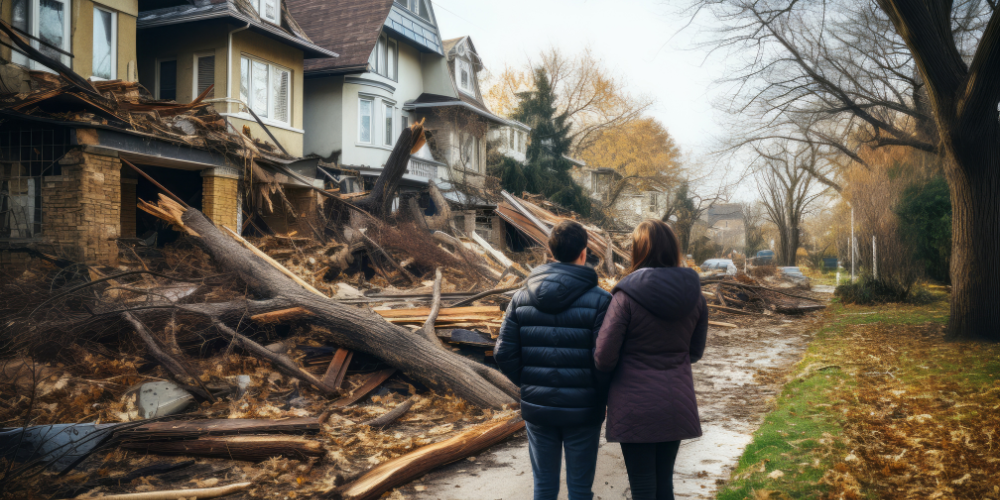
Expert Tips for Protecting Your Home From Natural Disasters

Preparing for natural disasters rarely tops anyone’s weekend to-do list. Yet, with unpredictable weather becoming more common, protecting a home against floods, wind, and fires is no longer optional—it’s essential. According to safety experts, a proactive approach not only protects property but also provides a sense of control during uncertain times.
Leslie Chapman-Henderson, president and CEO of the Federal Alliance for Safe Homes (FLASH), explained that many people underestimate their risk. “Confidence bias makes people think disasters won’t reach them,” she said. “But preparation is achievable and affordable and it can save lives and money.”
A strong disaster plan reduces anxiety and builds peace of mind. When homeowners take small, consistent steps, disaster readiness becomes part of daily life instead of an afterthought.
The Foundation of Disaster Preparedness
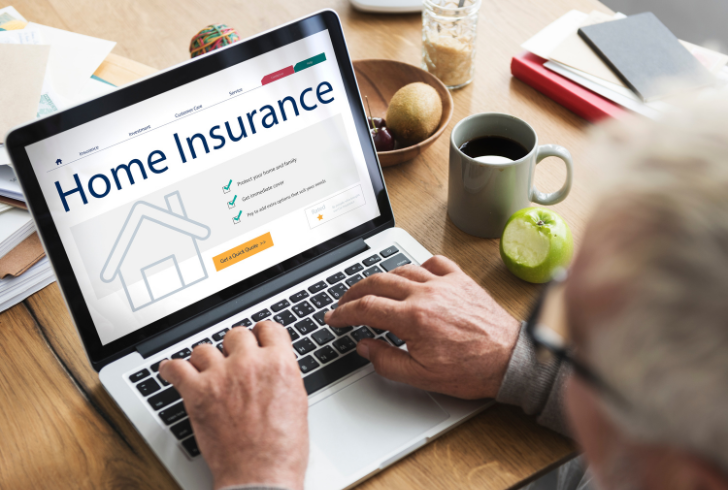
Freepik | Insurance is the first, crucial step of home protection and financial security.
Experts recommend starting with insurance. Elizabeth Hausler, founder of Build Change, emphasized the importance of coverage before construction or upgrades. “Home protection begins with insurance,” she said. “It’s the first layer of financial security.”
Reviewing policies ensures that homeowners understand what’s covered and what’s not. Many assume flood or wind damage is included when it often isn’t. Having a plan to cover deductibles and out-of-pocket costs keeps financial surprises in check.
Once insurance is squared away, tools like FLASH’s Inspect to Protect help homeowners assess their local risks. Entering an address reveals which hazards, floods, wildfires, or hurricanes pose the greatest threat and offers tailored safety recommendations.
Defending Against Flood Damage
Floods remain one of the most destructive and costly natural disasters. Traditional homeowners’ insurance usually excludes flood damage, making separate flood insurance vital. The National Flood Insurance Program (NFIP) and private insurers both provide options, and prices often depend on flood zone designations.
Homeowners can determine their area’s Base Flood Elevation (BFE) through FEMA resources. Knowing this measurement helps set the minimum height for critical systems like HVAC units, electrical panels, and water heaters. Experts recommend elevating them at least 12 inches above BFE for added protection.
Smart Home Fortification
The Insurance Institute for Business & Home Safety (IBHS) offers another valuable program known as FORTIFIED, a science-based set of construction standards designed to make homes more resilient. Fred Malik, the program’s director, shared that “making informed decisions based on science leaves you in a much stronger position than guessing.”
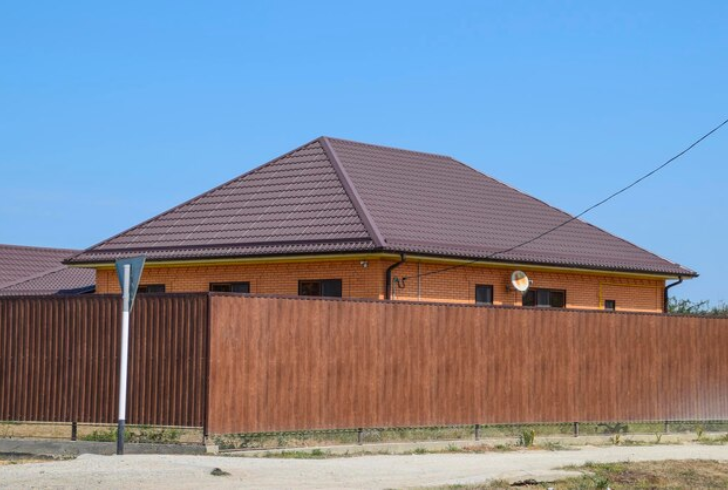
Freepik | eleonimages | Using FORTIFIED standards strengthens your home against extreme weather.
Homes built or upgraded to FORTIFIED standards often qualify for lower insurance premiums. Homeowners can find certified contractors through the program’s online directory, or they can independently verify that local builders hold valid licenses and state certifications.
Small upgrades such as reinforced roofing, storm shutters, and water barriers can make a significant difference during extreme weather events.
Reducing Wildfire Risk
While wildfires can move fast, preparation dramatically increases survival odds for both people and property. Experts advise creating a fire-resistant zone around the house to stop flames before they reach the walls.
The Ready, Set, Go! Program, developed by the International Association of Fire Chiefs, encourages clearing weeds, dry brush, and debris at least 30 feet from structures. Replacing wood mulch with noncombustible rock mulch also adds a buffer. Tree branches should stay at least 10 feet from rooftops and chimneys.
Homeowners should store propane tanks, firewood, and flammable tools far from living spaces. If time allows before evacuation, closing all windows and vents helps prevent embers from entering.
For air safety, designating a “clean room” provides a secure space with filtered air. The Environmental Protection Agency recommends sealing one room that can be closed tightly, equipping it with a portable air purifier, and keeping N95 masks available for emergencies.
Preparing for High Winds and Hurricanes
High winds can tear through roofs, shatter windows, and uproot trees in seconds. Reinforcing the roof is the most critical step. Patching loose shingles, using impact-resistant materials, and installing roof strappings can prevent the entire structure from lifting during storms.
Storm shutters and impact-rated windows block flying debris. Strengthening caulking and seals around windows and utility openings prevents water leaks and pressure changes that could cause more damage.
Outside, trimming large trees and securing outdoor furniture helps reduce hazards. Inside, the best protection is a wind-safe room a small, reinforced space such as a closet or bathroom.
Small Actions With Major Impact
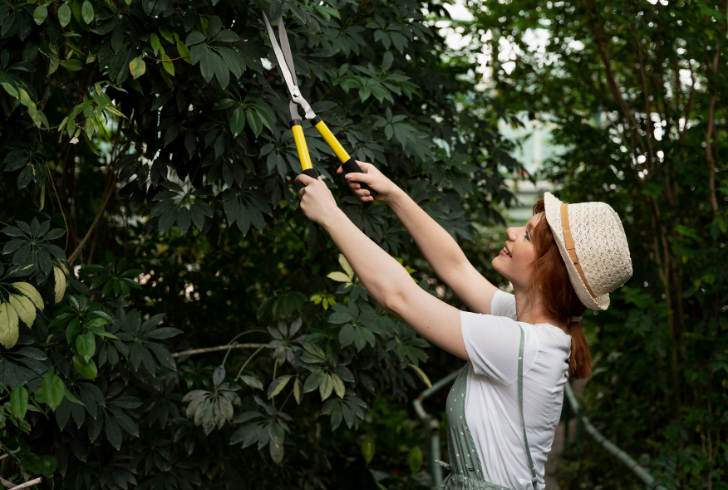
Freepik | Regular maintenance, such as checking seals and pruning trees, is the key to creating a disaster-ready home.
You don’t need to rebuild your home from the ground up to prepare for natural disasters. Readiness often comes down to routine care—clearing debris from gutters, sealing windows and doors, pruning nearby trees, and keeping drainage paths clear. Those simple habits can stop small problems from snowballing when severe weather hits.
Technology also plays a growing role in readiness. FEMA and National Weather Service apps send real-time alerts about approaching storms, wildfires, and floods—giving families the head start they need when time is critical.
A well-practiced family emergency plan is just as essential. Every member should know where to meet, how to get out safely, and how to reach each other if communication lines fail. Rehearsing these plans builds muscle memory and keeps panic at bay when it matters most.
Creating a Safer Future Begins Today
Though no one can predict the next natural disaster, preparation gives homeowners a sense of stability. Experts emphasize that lasting protection depends on three pillars: sound construction, reliable insurance, and attentive habits.
Leslie Chapman-Henderson puts it succinctly: “Being ready isn’t just about surviving the worst—it’s about living confidently every day.”
Preparation is the antidote to fear. With informed choices and regular care, every household can stand more securely in the face of uncertainty.
More inAdvice
-
`
Gen Z Craves Career Guidance, But Their Parents Are Struggling Too
Gen Z is stepping into the future with curiosity and ambition—but they’re not doing it alone. A growing number of teens...
July 25, 2025 -
`
Do Car Insurance Companies Offer Pay-As-You-Go Plans?
Car insurance premiums often feel unfair to people who rarely drive. Yet, most traditional auto policies still charge a fixed monthly...
July 17, 2025 -
`
Why the Koenigsegg Sadair Spear Is the Ultimate Hypercar Beast
Koenigsegg has revealed a new beast—the Sadair’s Spear. Tuning its focus on raw performance and brutal speed, this hypercar marks the...
July 11, 2025 -
`
Which States Have the Safest—and Riskiest—Drivers in America?
Driving safety isn’t just about skill. It’s also about location. A recent nationwide report shines a spotlight on where drivers are...
July 4, 2025 -
`
How to Save on Tesla Car Insurance Without Compromising Coverage
Owning a Tesla often brings savings on fuel and a futuristic driving experience, but the conversation changes quickly when it comes...
June 26, 2025 -
`
10 Weird Cars That Turned Heads and Won Hearts
Some cars turn heads with speed, others with luxury—but a rare few grab your attention simply by being delightfully strange. From...
June 20, 2025 -
`
Next-Gen Jeep Cherokee Expected to Arrive by Late 2025
After a break of two years, Jeep is prepared to relaunch the Cherokee brand. The automaker confirmed the return with fresh...
June 12, 2025 -
`
9 Tips to Make Night Driving Safer and Less Frightening
Once the sun dips below the horizon, driving becomes more than just a commute—it becomes a challenge. Limited visibility, harsh glares,...
June 6, 2025 -
`
The Impact of AI on Middle Management and Leadership Dynamics
Artificial intelligence is reshaping modern management practices. While intended to streamline tasks like approving time off or managing internal applications, its...
May 31, 2025




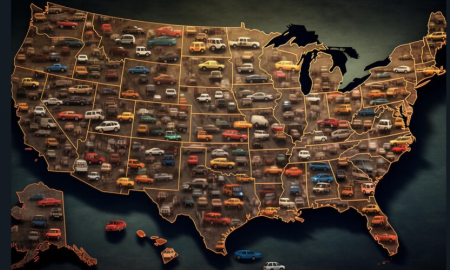










You must be logged in to post a comment Login